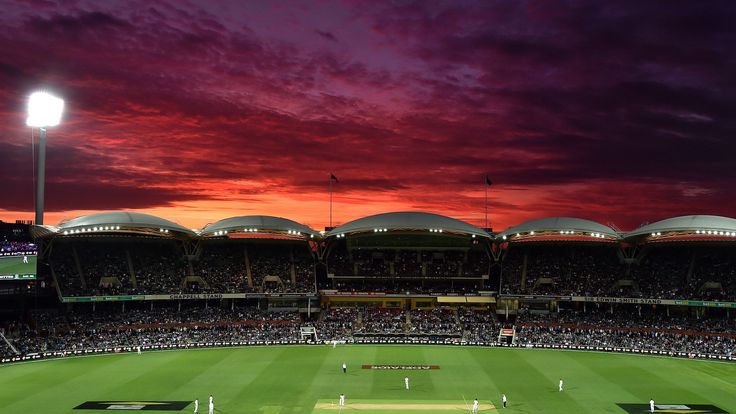Pitches need to be a tad less green, says Sky Sports pundit

Sunday 29 November 2015 13:28, UK
Former Australia batsman Marcus North was bowled over by the inaugural day-night Test and says the concept is here to stay…
As far as I'm concerned, the first day-night Test was a resounding success.
I was anxious beforehand at how the pink ball would hold up and react under lights, something I'm sure the players were concerned about as well.
But you were never going to get answers until you played it and once we did my fears were quickly put to bed, while you only had to look at the crowds to see how popular the concept was.
People flooded through the turnstiles to watch really exciting cricket and what really sold it for me was that there were no dull periods in the game - okay, the pitch offered some movement because of the grass coverage but you always had something to look forward to.
You wanted to see how the game and conditions would change as darkness fell and we played under lights, while it was fascinating looking at how players altered their tactics and approach.
Australia and New Zealand had to deal with different challenges throughout the day which was great, if a little different to what we are used to with the red ball in daylight.
I don't think there is too much to tinker with - the pink ball was a triumph in that it was easy to see from a spectator's point of view and didn't do anything untoward.
If you are taking this Test in isolation, though, I reckon you may want the track to be a little less green for day-nighters as to not sway too far towards the bowlers.
That said, you can't really say the night sessions doctored the game as just as many wickets fell in the daytime periods as in the dark.
As this experiment was more successful than anyone could have imagined, I think it will now become commonplace in some parts of the world, not in every series but in most.
I don't know how well it would work in England where it stays light for a long time or in the subcontinent where dew becomes a big factor but in West Indies, South Africa, New Zealand and Australia, it is a real option.
Perhaps it could work in the UAE, too - we saw next to no one turn up for the recent series between England and Pakistan but night games may allow the some of the expats to flock in after work.
Day-night Tests will also allow players to hone their skills in different environments, much like they do when they travel to the subcontinent and deal with spinning pitches, and, as a result, they will become better players.
Australia and New Zealand's players deserve credit for embracing this idea and the authorities deserve credit for putting it into action, being proactive and looking to grow the game.
We have got people taking about Test cricket again.